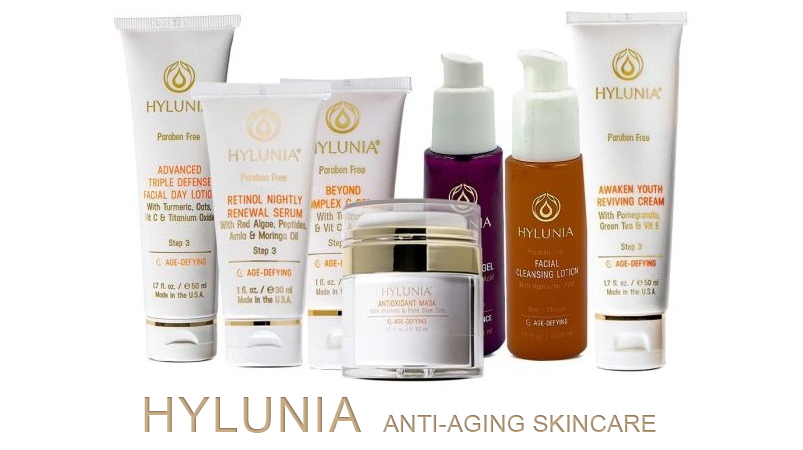
We all know that SPF is the go-to for sun protection, but there’s more to keeping your skin safe from UV damage than just slapping on some sunscreen. If you want to fight wrinkles, dark spots, and sagging, it’s time to think beyond SPF. From protective clothing to smart skincare choices, here are year-round sun protection tips that go the extra mile in keeping your skin youthful and healthy.
Contents
- Understanding UV Rays: Why Sun Protection Is Important All Year
- Tip #1: Use Physical Barriers Alongside SPF
- Tip #2: Sunglasses Are Not Just for Style
- Tip #3: Reapply, Reapply, Reapply
- Tip #4: Embrace Antioxidants in Your Skincare Routine
- Tip #5: Indoor Sun Protection
- Tip #6: Mind the Reflective Surfaces
- Tip #7: Apply Sunscreen to Often-Ignored Areas
Understanding UV Rays: Why Sun Protection Is Important All Year
It’s easy to think of sun protection as a “summer only” thing, but UV rays are a year-round issue. The sun emits two types of rays that affect our skin—UVA and UVB. UVB rays are the ones that cause sunburn, while UVA rays penetrate deeper into the skin, leading to aging and increasing the risk of skin cancer.
UVA vs. UVB: The Difference Matters
UVA rays are present even on cloudy days and can pass through windows, making them a year-round threat. While UVB rays are strongest in summer, UVA rays stay consistent throughout the year, so protecting your skin from both types is essential no matter the season.
The Aging Effect of UV Exposure
UV exposure leads to a breakdown of collagen and elastin, the proteins that keep your skin firm and smooth. Over time, this results in fine lines, wrinkles, and sagging. By protecting your skin from UV damage consistently, you’re not only keeping your skin safe but also delaying visible signs of aging.
Tip #1: Use Physical Barriers Alongside SPF
Sunscreen is essential, but using physical barriers like hats, sunglasses, and clothing can offer added protection. Think of these as extra armor against UV rays that shields your skin even when your sunscreen starts to wear off.
Choose Sun-Protective Clothing
Some clothing is specially designed with a UPF (Ultraviolet Protection Factor) rating, which blocks UV rays from reaching your skin. UPF clothing is lightweight, breathable, and a great choice for those who spend a lot of time outdoors. A long-sleeved UPF shirt can provide as much as SPF 50-level protection.
Wear a Wide-Brimmed Hat
A wide-brimmed hat shields your face, neck, and ears from direct sunlight, areas that are often missed by sunscreen. Look for a hat with at least a 3-inch brim for full coverage, and if you want extra protection, consider one made of tightly woven fabric that offers UV protection.
Tip #2: Sunglasses Are Not Just for Style
Sunglasses aren’t just an accessory—they protect the delicate skin around your eyes from UV damage, which is a common area for wrinkles and dark spots. Wearing the right pair of sunglasses can also protect your eyes from UV rays, reducing your risk of cataracts.
Look for UV Protection in Sunglasses
Not all sunglasses are created equal. Look for sunglasses that block 100% of UVA and UVB rays. Wraparound styles offer extra coverage, preventing rays from sneaking in through the sides. Polarized lenses reduce glare, which can make it more comfortable to be outside without squinting (squinting can lead to—you guessed it—wrinkles).
Take Advantage of Sunglasses Year-Round
Even in winter, UV rays can be intense, especially if they’re reflecting off snow or water. Keep a pair of UV-blocking sunglasses handy no matter the season to protect the sensitive skin around your eyes from year-round exposure.
Tip #3: Reapply, Reapply, Reapply
One of the biggest mistakes people make with sunscreen is forgetting to reapply. Sunscreen typically only lasts for about two hours, and even less if you’re swimming or sweating. Reapplying throughout the day is key to keeping your skin protected.
Carry a Travel-Sized Sunscreen
A small bottle of sunscreen in your bag makes it easy to reapply on the go. For convenience, choose a sunscreen stick or powder sunscreen that’s easy to apply without getting your hands messy.
Set a Reminder
It’s easy to forget to reapply sunscreen, especially if you’re busy. Set an alarm or reminder on your phone to reapply every two hours. This small step can make a big difference in keeping your skin protected all day long.
Tip #4: Embrace Antioxidants in Your Skincare Routine
Antioxidants are a fantastic way to support your sunscreen and add another layer of protection. Ingredients like vitamin C, vitamin E, and green tea extract neutralize free radicals, which are molecules that break down collagen and elastin.
Why Antioxidants Work Well with Sunscreen
Sunscreen blocks most UV rays, but some still sneak through. Antioxidants pick up the slack by minimizing the damage those rays can cause. They protect your skin from oxidative stress, which leads to signs of aging like wrinkles and dark spots.
How to Use Antioxidants Effectively
Apply an antioxidant serum in the morning before your sunscreen. Look for stable forms of vitamin C or products with multiple antioxidants for added benefit. This one-two punch of antioxidants and SPF creates a strong defense against sun-related aging.
Tip #5: Indoor Sun Protection
Just because you’re indoors doesn’t mean you’re safe from UV rays. UVA rays can pass through windows and cause damage even when you’re not outside. If you spend a lot of time near windows or in a car, indoor sun protection is a must.
Apply SPF if You’re Near Windows
If your desk is by a sunny window or you’re driving for extended periods, be sure to apply sunscreen. Windows block UVB rays but often let UVA rays right through, so don’t skip SPF even if you’re inside.
Consider Installing UV-Blocking Film
If you work from home or spend hours in a sunlit room, UV-blocking window film can add an extra layer of protection. These films reduce the amount of UVA that comes through the glass, protecting your skin from prolonged indoor exposure.
Tip #6: Mind the Reflective Surfaces
Reflective surfaces like water, sand, and snow can bounce UV rays back onto your skin, increasing your exposure. Even if you’re wearing sunscreen, these surfaces can amplify UV damage, so take extra precautions when you’re around them.
Be Extra Vigilant Near Water and Snow
When swimming or skiing, keep in mind that UV rays reflect off water and snow, doubling your exposure. Reapply waterproof sunscreen frequently, and consider wearing additional protective clothing like rash guards or balaclavas for extended outdoor activities.
Don’t Forget About Sand
Yes, sand reflects UV rays too! If you’re spending a day at the beach, remember that your exposure is higher than it might seem. Along with sunscreen, bring a sun umbrella or beach tent to provide shade and minimize direct sun exposure.
Tip #7: Apply Sunscreen to Often-Ignored Areas
When applying sunscreen, don’t forget areas like the tops of your ears, the back of your neck, your hands, and your feet. These spots are often neglected but are just as prone to sun damage as your face.
Sunscreen for the Scalp
If you have thin or short hair, your scalp can get sunburned. Consider using a spray sunscreen for easy application, or wear a hat for protection. Powder sunscreens are also handy for quick touch-ups on the scalp throughout the day.
Hands and Neck Need Love Too
The hands and neck are often exposed to the sun but rarely get sunscreen, leading to visible aging in these areas. Apply sunscreen to your hands and neck daily to keep them as protected as your face. Hand creams with SPF are a convenient way to ensure your hands stay covered.
Sun protection isn’t just about avoiding a sunburn; it’s about keeping your skin healthy and youthful for the long haul. By using these tips alongside your SPF routine, you can create a year-round defense against UV damage and keep your skin looking its best.

